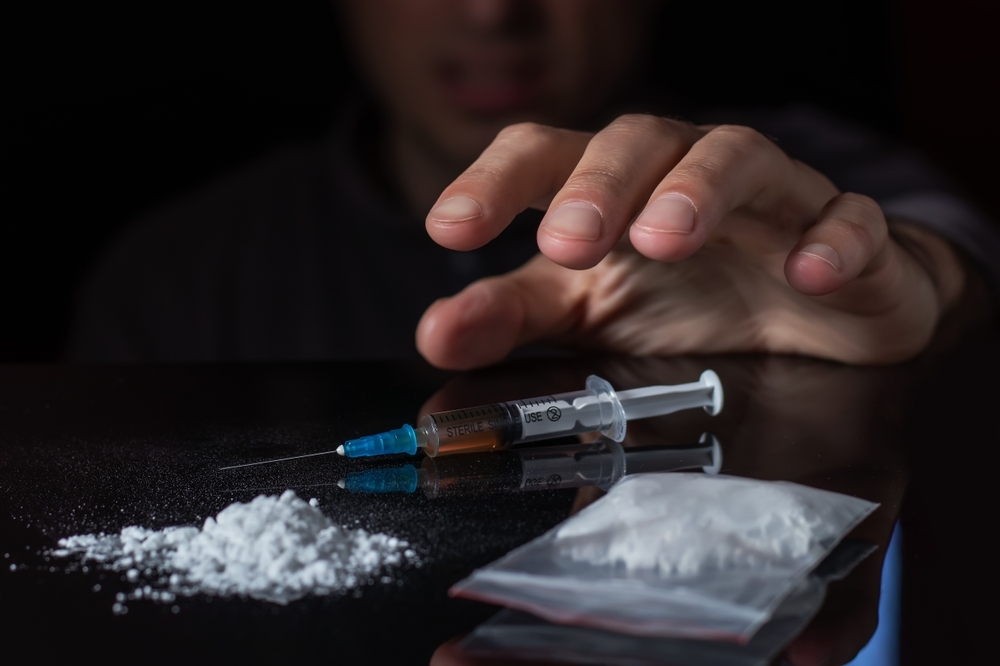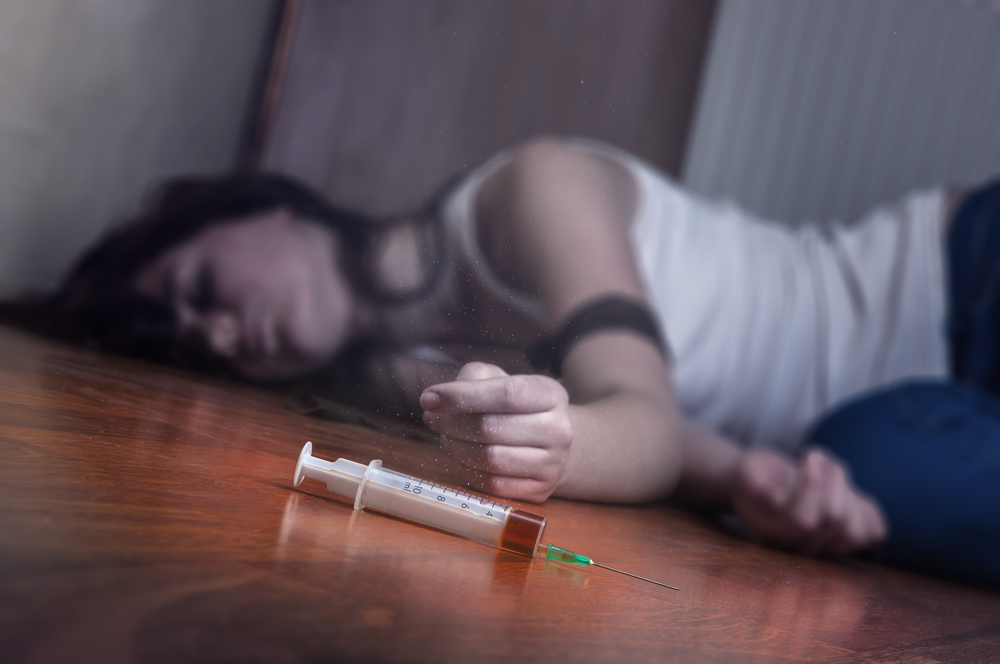Last Updated:
February 25th, 2025
All types of addiction pose a certain level of risk. Unfortunately, however, heroin abuse is associated with particularly high dangers. Opiates are known for being very potent and have been used in medical and ritual contexts for centuries. The rise of heroin addiction has been so steep that it has been dubbed an ‘epidemic’ to highlight its rapid spread. Alongside affecting growing numbers, heroin is known for its many formidable effects. With a range of physical, psychological and social symptoms, heroin can chronically impede quality of life. In many cases, it has been known to lead to death.
However, this does not mean that heroin-based drug addiction is a life sentence. It is possible to recover and live a long, full life following heroin addiction. Whilst recovery from heroin addiction is a lengthy and difficult process, it can be achieved with the appropriate support. This blog aims to highlight the challenges associated with heroin recovery and pinpoints steps you can take to safeguard your health and well-being during the process.
Heroin addiction
In 2019, there were around 600,000 deaths linked to drug use. A huge 80% of these were attributed to the use of opiates such as heroin. This highlights two key facts:
- Heavy heroin use is very widespread
- Heavy heroin use carries significant, potentially fatal dangers
The stats
According to data released by the UK Government, almost half of all adults ‘in contact with drug and alcohol services’ in England between April 2022 and March 2023 were users of opiates.
This works out at 138,604 people in treatment for opiate abuse in this time period. 100,629 (72.6%) of these people were male, and 37,975 (27.4%) were female.
People with opiate problems were also more likely to have increased risk of housing insecurity. 16% of people seeking opiate treatment stated a ‘risk of homelessness in the next 8 weeks.’
67% of patients in the opiate group had a mental health treatment need of some kind.
The data also suggests that a significant percentage of people seeking support for opiate addiction engaged in polydrug use. This is when more than one addictive substance is misused. The most common substances abused alongside heroin are alcohol and crack cocaine. Polydrug use is known to increase specific risks associated with addiction such as relapse and potential overdose.
The science
Heroin addiction is formed through repeated, heavy use. Heroin belongs to a family of drugs known as opiates. Opiates influence us by interacting with the opioid receptors in our brains. This mechanism of action leads to a change in the way we process pain, pleasure and positive feelings.
In the short-term, heroin can cause a rush of intense feelings. This is known as euphoria. It can also reduce pain and lead to a drowsiness that can emulate a pleasurable kind of calm. These are the feelings that repeat heroin users are trying to evoke. However, drugs are very unpredictable, and it is possible for our experiences with drugs to change from use to use. More negative effects of a heroin high include:
- Sickness
- Dry mouth
- Reduced mental functioning
- Feeling ‘foggy’
- Itching
- Respiratory depression
- Agitation
- Anxiety
- Confusion
This kind of state can carry its own kinds of acute risk. When heroin is used again and again, these acute risks are paired with a set of long-term health effects that can seriously threaten survival.
The risks
Perhaps the biggest risk linked with heroin addiction is a fatal overdose. This can be experienced by first-time users or long-term users, making the risk even of ‘dabbling’ with the drug especially high. However, outside of this, there is a broad range of other risks to consider.
Immediate risk
Immediate risks refer to what can happen at the moment. These are ‘acute’ risks that are linked to how we can think, feel or respond to heroin during the period of the high.
These risks are:
- Respiratory depression
- Loss of consciousness
- Coma
- Sharps injury
- Collapsed veins
- Diarrhoea
- Accident or injury linked to unpredictable behaviour
Long-term risk
Long-term risks are often more serious and can be considered cumulative dangers that build over periods of use.
Such risks include:
- Brain damage
- Heart attack
- Sepsis
- Infections such as HIV/AIDs or hepatitis
- Severe weight loss
- Muscle wasting
- Tissue necrosis
- Difficulty sleeping
- Increased sensitivity to pain
- Reduction in the brain’s white matter
Challenges faced during recovery
When we think of risk in terms of addiction, we can often focus on health prognosis. This leads us to spend the most time thinking about the physical and psychological impact of heroin. However, there are social risks and challenges involved with heavy heroin use, too. These can include:
- Withdrawing from social contact
- Engaging in criminal activity
- Financial difficulties
- Housing insecurity
- Financial and professional issues
- Estrangement from loved ones
- Increased vulnerability to abuse
- Increased likelihood of being violent to others
- Increased suicide risk
Death during heroin recovery
Unfortunately, not all people survive recovery. It is possible for people to die whilst in treatment for addiction. Out of the 290,635 people in addiction treatment between 2022 and 2023, 4.166 people died. Whilst this is a small percentage at 1.4%, it is still a significant statistic, representing many lives lost.
Death during treatment can occur for many reasons. These are often linked to overdose or other drug-related illnesses and injuries. Often, people use heroin either whilst alone or with other people who may also be using it. This makes a confident and speedy response to risk quite unlikely to occur. This increases the risk of significant health events not being addressed rapidly enough in these situations.
Implementing support
Whilst there is a threat to life when heroin is present, heroin use does not have to lead to fatality. There are ways you can place safeguards for yourself (or a loved one) to reduce the risk of mortality.
The best ways to bolster your safety during heroin recovery are:
- Accessing formal rehab support
- Seeking advice from charities and support groups
- Staying in close contact with primary care providers
- Building and staying in contact with a support system
- Being honest about your use
- Not sharing needles
- Using harm reduction techniques and centres
- Not using heroin at the same time as other drugs
- Sticking to positive routines
- Identify previous cycles of negative behaviour
- Avoiding spaces, people and activities that are triggering
- Stay away from criminal activity
- Set small, achievable recovery goals
- Implement hobbies and positive activities into your daily schedule
- Practice mindfulness
- Try to write about your feelings
- Reflect and reward yourself for progress
- Make an effort to look after your body through nutrition and good sleep
- Allocate a person to contact when you feel low
- Contact helplines and emergency services (999) when you feel unsafe
Get help for heroin addiction
Opioid dependency is a tough reality to face, but there is still life after heroin addiction. From holistic therapies programmes to supported detoxes and residential care, treatment for heroin addiction can be found in all forms. At UKAT, there is an appropriate route to recovery for everybody. Contact us today to seek judgment-free, specialist advice from a member of our consultation and admissions team.
(Click here to see works cited)
- https://www.ncbi.nlm.nih.gov/books/NBK458661/
- https://www.who.int/news-room/fact-sheets/detail/opioid-overdose#:~:text=Worldwide%2C%20about%20600%20000%20deaths,of%20opioid%20overdose%20in%202019.
- https://www.gov.uk/government/statistics/substance-misuse-treatment-for-adults-statistics-2022-to-2023/adult-substance-misuse-treatment-statistics-2022-to-2023-report
- https://www.gov.uk/government/statistics/substance-misuse-treatment-for-adults-statistics-2022-to-2023/adult-substance-misuse-treatment-statistics-2022-to-2023-report
- https://www.gov.uk/government/statistics/substance-misuse-treatment-for-adults-statistics-2022-to-2023/adult-substance-misuse-treatment-statistics-2022-to-2023-report
- https://www.gov.uk/government/statistics/substance-misuse-treatment-for-adults-statistics-2022-to-2023/adult-substance-misuse-treatment-statistics-2022-to-2023-report
- https://www.gov.uk/government/statistics/substance-misuse-treatment-for-adults-statistics-2022-to-2023/adult-substance-misuse-treatment-statistics-2022-to-2023-report
- https://nida.nih.gov/sites/default/files/heroinrrs_11_14.pdf
- https://nida.nih.gov/publications/research-reports/heroin/what-are-immediate-short-term-effects-heroin-use
- https://nida.nih.gov/publications/research-reports/heroin/what-are-long-term-effects-heroin-use
- https://www.gov.uk/government/statistics/substance-misuse-treatment-for-adults-statistics-2022-to-2023/adult-substance-misuse-treatment-statistics-2022-to-2023-report
- https://jamanetwork.com/journals/jamapsychiatry/article-abstract/491517
- https://hri.global/what-is-harm-reduction/


